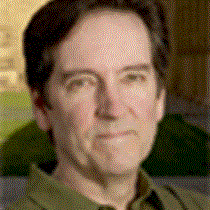Gdansk
"Polish pride" was the theme of this day, and it came in two distinct, though related varieties. This morning some of us visited the "Roads to Freedom" museum, which documents the struggle of the Solidarity trade union movement to stand for freedom in the face of the oppression of the Soviet-backed communist regime.
There are many Polish heroes in this story, including Pope John Paul II, but the central hero of the Solidarity story is Lech Walesa, who started our activities today by coming aboard ship and giving us an interesting and entertaining talk. The "Roads to Freedom" museum tells the story of how Poland led the way to freedom across East-Central Europe in 1989, and then in other countries into the 1990s and beyond. What the museum makes clear is that Poland sees itself as the leader by example in the fight for freedom – the democratic wave – that began in the 1980s, and that the city of Gdansk, birthplace of Solidarity, inspired the entire process. It is, above all, a story of Polish fortitude. The Solidarity monument, which stands outside the Gdansk (formerly Lenin) Shipyard and which was built to honor the victims who died in the government suppression of Gdansk shipyard strikers in 1970, serves, in Polish eyes, as the starting point for the entire freedom wave that crested in 1989.
The museum also displayed the Polish sense of pride in the hard life that citizens had to endure under communism. Food rationing was a part of daily life that people who lived under the communist system can never forget. The entrance ticket to the museum, distributed to each paying guest, is a replica of a rationing coupon given out in communist times that allowed its holder to secure maximum 10 lbs. of meat per month. The museum includes a recreation of a food shop from the communist era, with near-empty, unsanitary shelves and makeshift signs of primitive cardboard. Our guide was very keen for us to know that ordinary people like her, who did not have access to the special stores enjoyed exclusively by the elite, had to line up for hours in order to reach the counters at such poorly stocked shops.
The afternoon walking tour of old town Gdansk was the occasion for the display of a different kind of Polish pride: namely, that owing to the Poles' painstaking recreation, after World War II, of historic Danzig, which had been destroyed almost entirely toward the end of the conflict. The splendor of old Danzig was lost, but then lovingly restored over several decades. The Polish sense of pride in this miracle of restoration was evident in the remarks of our Polish guide, her detailed description of how the original buildings were reconstructed using old photographs and drawings and in some cases architectural plans. In the desperate economic circumstances of the postwar years, the citizens of Gdansk might have settled for a more practical reconstruction of their city, but their characteristic stubbornness inspired them to a truly remarkable achievement of which they are justifiably proud.




